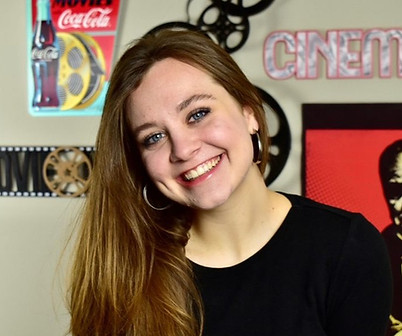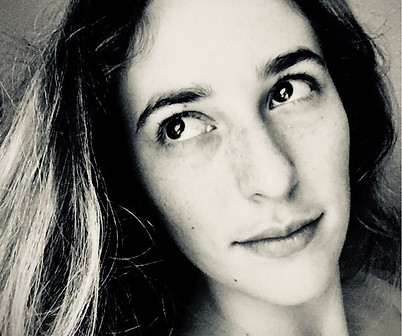



Liminal
Liminal is a found footage film about two teens investigating a neighborhood disappearance. While looking into a local bookstore as a part of the hunt, they become lost in a pocket of liminal space, and they aren't alone...


Meet the Cast
Liminal is a short film that was shot over the summer on a small budget. Our cast is smaller than most, but their talent is huge!

Jess Bryant as
Riley Anderson
Jess is playing Liminal’s main character Riley Anderson. This is Jess’ debut in the acting field. She has previously worked closely with Liminal’s director, Elizabeth Scott, and her kind attitude and vibrant personality make her a wonderful candidate for Riley. In addition, she has experience in and a passion for American Sign Language having seen the positive effects of it being introduced in her own family life, making her a great choice to play a Child of a Deaf Adult (CODA).

Joshua Knight as
Landon Johnson
Joshua is playing Landon Johnson, Riley’s best friend and cameraman for her ventures. Joshua is an experienced actor and stuntman, who has both played in and coordinated the stunts on various short films. Joshua is also a filmmaker with particular interest in camera work. His acting and camera experience make him uniquely qualified for this part as the camera operator that Landon is within the world of the film as well as the on-set camera operator for this found footage short film.

Cat Modica as
The Figure
Cat is playing the Figure, Liminal’s antagonist. Cat is a theater major at Liberty University and has experience in both stage and on screen acting. She has played a variety of characters and personas and looks forward to challenging herself in playing a monster-like character. She also has experience working with special effects makeup, both applying it to others and to herself. This will no doubt make the process of transforming her into the terrifying figure much simpler and more streamlined.
FAQs
What inspired the film?
This film has gone through many iterations since its conception. It was originally inspired by a story I (Elizabeth) wrote in high school. That story was a murder mystery that the main characters of this story were trying to solve. I realized my initial story was too complex for a short film, so I turned it into a thriller rather than a mystery. That story was much closer to the story it is now but with some significant differences. There was a different location, different motivation, and different ending. After letting my roommate read it, she noticed that I had accidentally included the concept of liminal space and suggested I lean more into that. I did so, changed the location, and gave my characters better motivations, and I had my story. All that was left was to clean it up and polish it.
What is liminal space?
Liminal spaces are conceptual spaces in the world that feel off. They are “between places” and “thresholds.” Generally, they are abandoned places, hallways, offices, empty parking lots, or really anything that’s a little eerie. Some theories suggest that they are parallel universes that are endless versions of these places that people can and have become trapped in. It has been compared to “no-clipping” in video games, where you as the player can accidentally jump through a wall into a place in the game that the developer didn’t intend for you to see.
What inspired a CODA character?
In high school, I took two semesters of American Sign Language, which happened to include a lot about the Deaf culture. That experience stuck with me, and I wrote a CODA character into a previous short film that I created, whose story I fell in love with throughout the film’s creation. I took inspiration from that film and made sign language, which Riley speaks and Landon is learning, a key component in their escape from the Figure.
What were the challenges of creating a found footage film?
The biggest challenge was having my director of photography and a principal character be the same person. While I could have made them two separate people, I didn’t have the budget or the space to add another person to the crew, and from previous experience, I’ve found it makes more sense to just have the person that’s holding the camera in-world to be holding the camera in real life. Other challenges included how long each take had to be to make it realistic for found footage as well as lighting and production designing to keep the audience guessing yet still engaged.
Learn More
Check out more information about the creation of Liminal.